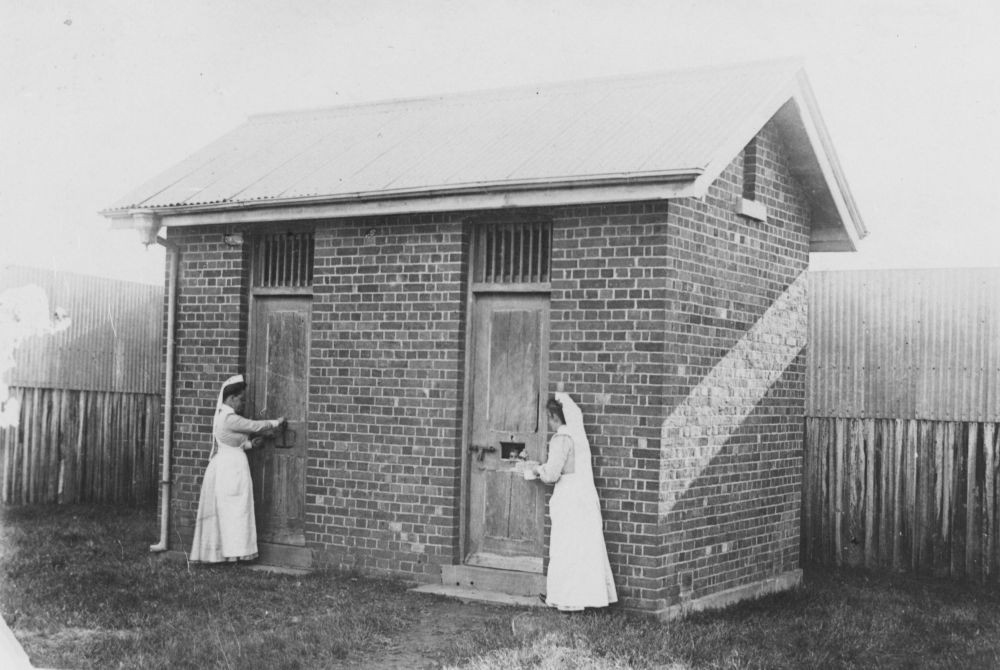Did you know?
Outbreaks of bubonic plague, spread by rats and introduced by ships from overseas, were common in Queensland at the turn of the century.

Maryborough Outbreak (Primary Pneumonic Plague), MayJune 1905. John Oxley Library, State Library of Queensland. Neg 53460
Maryborough Outbreak (Primary Pneumonic Plague), MayJune 1905. John Oxley Library, State Library of Queensland. Neg 53460
The first known case of plague in Australia was reported in Sydney in January 1900. The first case in Queensland occurred in Rockhampton in April 1900 and not long after cases arose in Townsville and Brisbane.
The first victim in Brisbane was a carter named James Drevesen, who worked at the wharves and lived in Woolloongabba. He was admitted to the hastily built Colmslie Plague Hospital. The Drevesen's house (pictured) was cleansed and fumigated, bed linen and curtains burned, and an iron stockade was erected around the property and two neighbouring houses.

Bubonic plague in Hawthorne Street, Woolloongabba, Brisbane, Queensland, 1900. John Oxley Library, State Library of Queensland. Neg 47425
Timber residences in Hawthorne Street, Woolloongabba, Brisbane, Queensland, where the first case of Bubonic Plague occured in Brisbane. The house on the left of the photograph was occupied by James Drevesen, the first patient. Drevesen was a van driver employed to remove goods from the wharves where dead and plague-infected rats were found.

Quarantine barricade around houses in Hawthorne Street, Woolloongabba, Brisbane, Queensland, 1900. John Oxley Library, State Library of Queensland. Neg 47426
During the 1900 epidemic there were 136 identified cases of plague infection in Queensland. Fifty-seven of these cases perished. The majority of the 136 cases were male, with 114 males compared to 22 females. Brisbane registered the most cases with 56 infections and 25 deaths, followed by Townsville with 37 cases and 9 deaths, Rockhampton with 36 cases and 21 deaths, Cairns with 5 cases and 2 deaths, and Charters Towers and Ipswich both with 1 case but no fatalities.
For the next nine years epidemics occurred each year and were confined to ports. The only inland centre which had the plague was Ipswich. Measures taken to combat the disease included the surveillance of vessels arriving in the state, the destruction of rats, the establishment of isolation hospitals and special provisions for the disposal of the dead. Plague victims who succumbed to the disease were wrapped in sheets soaked in carbolic acid and their coffins were slaked with lime.

Destroyed rats during the bubonic plague in Brisbane, Queensland, 1900-1902. John Oxley Library, State Library of Queensland. Neg 108588
After 1909 there were twelve plague-free years. This led to a slackening in the regulations and a man died of plague suddenly in Brisbane in 1921. This outbreak caused sixty-three deaths. The last case of plague was reported in Queensland in 1922.

Nurses tending to isolated plague cases, Maryborough, 1905. John Oxley Library, State Library of Queensland. Neg 168821
Sources about the plague in Queensland include:
- Patrick, Ross, A history of health & medicine in Queensland 1824-1960, St Lucia: University of Queensland Press, 1987 (available online through Text Queensland)
- Ham, B. Burnett, Report on plague in Queensland 1900-1907, Brisbane: Government Printer, 1907 (available online through Internet Archive)
- Thearle, M. John, Plague revisited: the black death: an account of plague in Australia, 1900-1923, Sydney: Royal Australian College of Physicians, 1994 (available to view onsite at State Library of Queensland)
Queensland Parliamentary Papers
Comments
Your email address will not be published.
We welcome relevant, respectful comments.